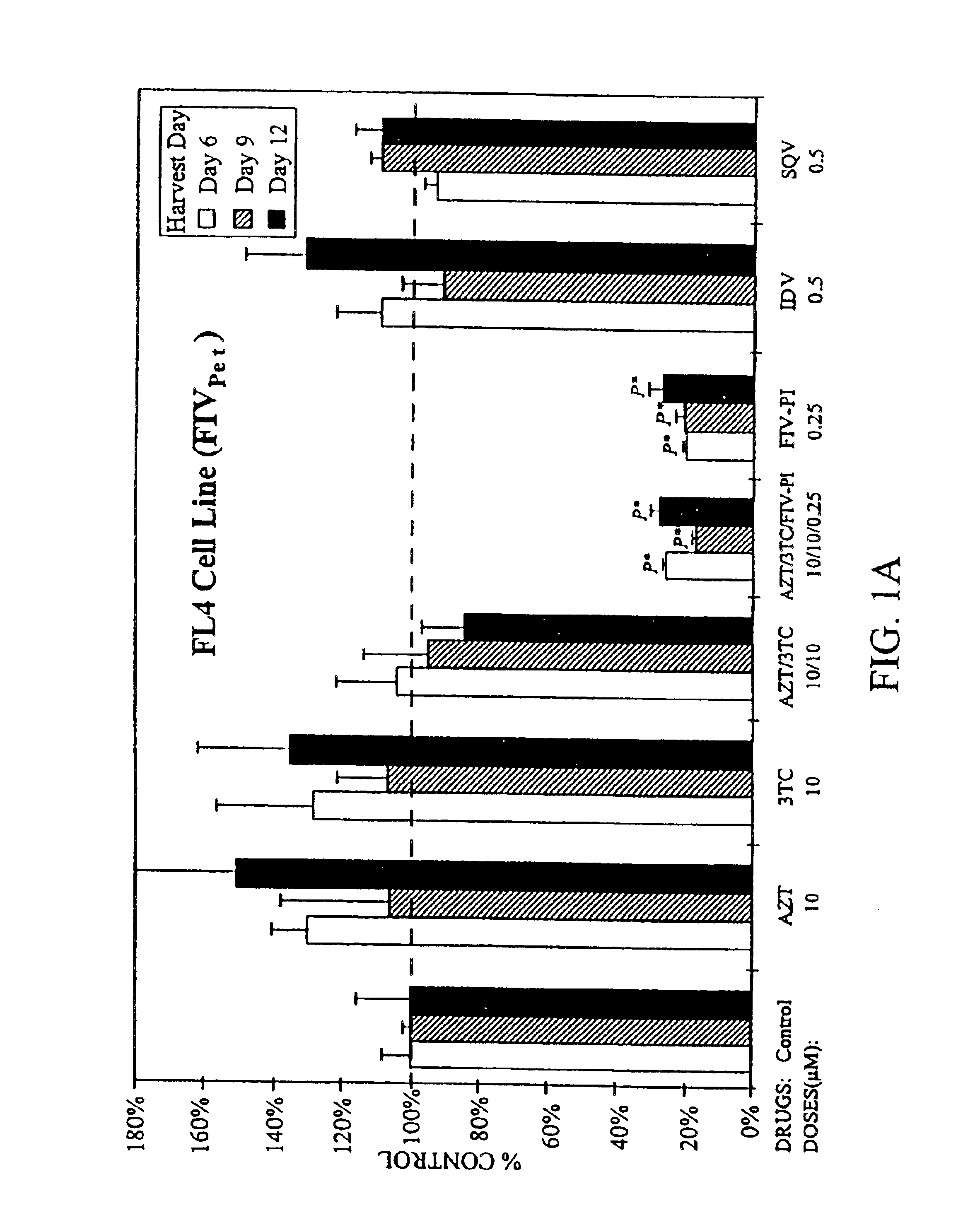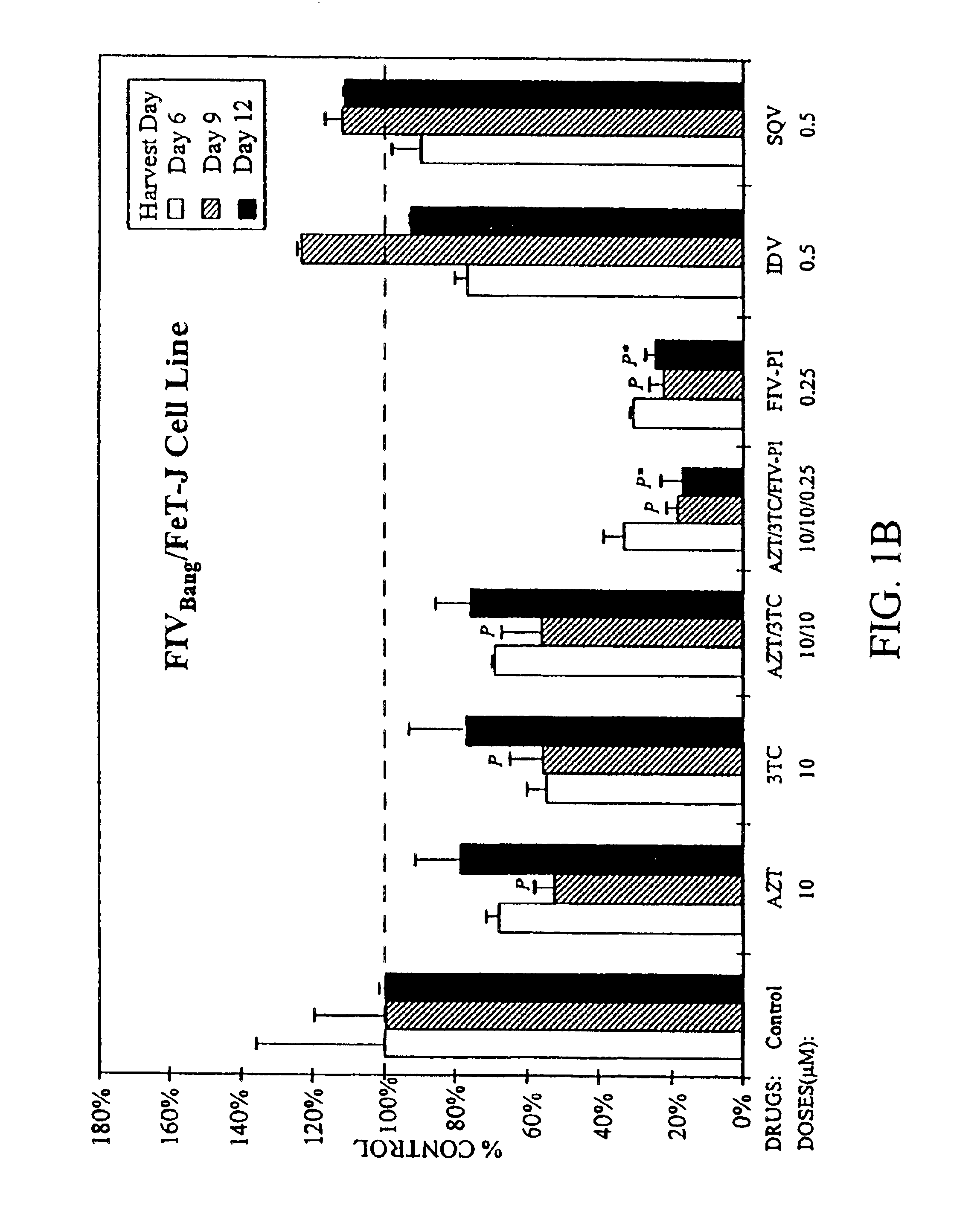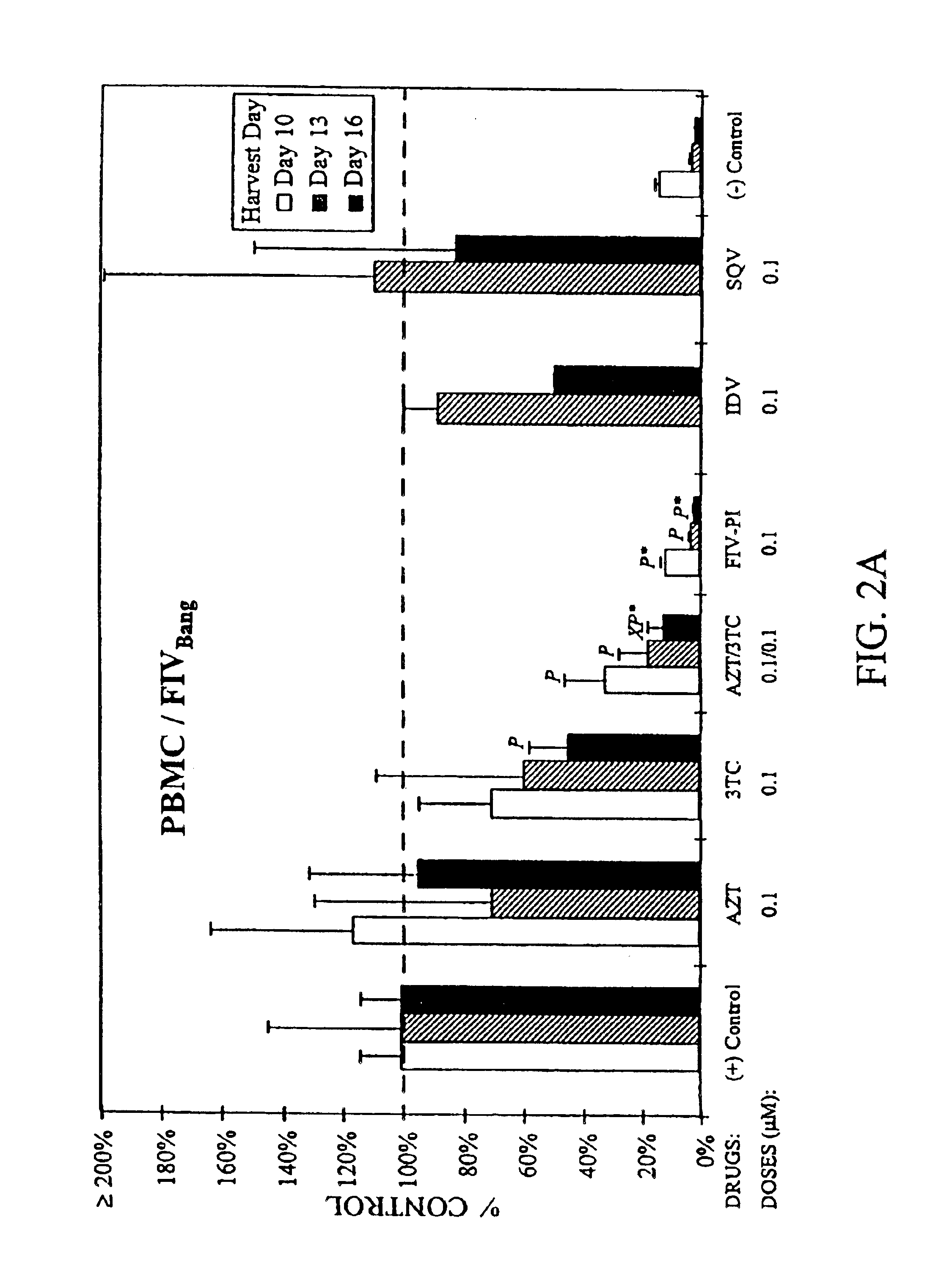Combination therapy for treatment of FIV infection
a technology of conjugation therapy and fiv infection, which is applied in the field of conjugation therapy for treating fiv infection, can solve the problems of unremarkable therapeutic use of azt, delay in fiv antibody production in some animals, and inability to protect cats from fiv infection
- Summary
- Abstract
- Description
- Claims
- Application Information
AI Technical Summary
Problems solved by technology
Method used
Image
Examples
example 1
In Vitro Efficacy of AZT, 3TC, and PI
[0026]In the first set of in vitro studies, feline T-cell lines chronically infected with FIVPet, (FL-4 cells) or FIVBang, (FIVBang / FeT-J cells) at 2×105 cells / ml were treated for 3 weeks with a single drug or various combinations of AZT, 3TC, an FIV protease inhibitor (FIV-PI; Hoescht-Bayer HBY-793), and HIV protease inhibitors (HIV-PI) (FIGS. 1A and 1B). Saquinavir (SQV) and Indinavir (IDV) were used as the HIV-PIs. Culture supernatants were harvested and the cells were resuspended in fresh culture media containing appropriate drug(s) at 34 day intervals. Viral replication was determined by measuring the levels of reverse transcriptase (RT) activity in the culture supernatants (Rey et al., 1984). Drug toxicity in these cultures were monitored by viability and absolute cell count analyses using trypan blue exclusion method (Mishell et al., 1980).
[0027]Single and combination drug doses which were determined to be nontoxic to the test cells were u...
example 2
Prophylactic Efficacy of AZT / 3TC in Cats
[0030]Based on the findings from in vitro studies, the prophylactic use of AZT / 3TC combination was next tested in experimental cats. Four of the eight SPF cats (16-20 weeks of age) received oral administration of AZT and 3TC (75 mg / kg each) twice a day (BID), while remaining cats received placebo. This treatment dose was based on the in vivo research, in which six SPF cats (2 cats per treatment group) treated (BID) with either AZT or 3TC at 100 mg / kg or AZT / 3TC combination at 50 mg / kg each had no hematological or clinical abnormalities after two weeks of treatment. In this study, all cats except for one treated cat (#RU1) were inoculated with 100 50% cat infectious dose (C1D50) of FIVUK-8 sat 3 days after the first drug or placebo treatment. FIVUK-8 was used in this study because this strain gave more consistent CD4 / CD8 ratio inversion in a larger number of infected cats than did infection with FIVBang or FIVpet. All cats received either the d...
example 3
Therapeutic Efficacy of AZT / 3TC in Chronically FIV-Infected Cats
[0033]Based on the in vivo toxicity observed in the prophylactic study, three cats (#101, #NK6, #144) chronically infected with FIVUK-8 for 16 weeks were treated at 20 mg / kg of each drug (BID), while an additional three infected cats (#1H5, #NK4, #158) received placebo. These cats were treated with either drug combination or placebo for 8 weeks and monitored an additional 4 weeks for changes in FIV load and CD4 / CD8 values. All parameters monitored were identical to those of the prophylactic study. All treated cats developed either mild or severe anemia by 3.5 weeks of treatment. As a result, both drug doses were lowered to 10 mg / kg. Nevertheless, the anemia in one cat (#144) became so severe by 6 weeks of treatment that the drug treatment was terminated for 1 week and resumed thereafter at a low dose of 5 mg / kg of each drug (BID). Unlike the prophylactic study, no significant differences in either FIV load or CD4 / CD8 ra...
PUM
| Property | Measurement | Unit |
|---|---|---|
| structure | aaaaa | aaaaa |
| morphologic characteristics | aaaaa | aaaaa |
| concentrations | aaaaa | aaaaa |
Abstract
Description
Claims
Application Information
 Login to View More
Login to View More - R&D
- Intellectual Property
- Life Sciences
- Materials
- Tech Scout
- Unparalleled Data Quality
- Higher Quality Content
- 60% Fewer Hallucinations
Browse by: Latest US Patents, China's latest patents, Technical Efficacy Thesaurus, Application Domain, Technology Topic, Popular Technical Reports.
© 2025 PatSnap. All rights reserved.Legal|Privacy policy|Modern Slavery Act Transparency Statement|Sitemap|About US| Contact US: help@patsnap.com



